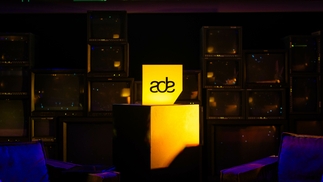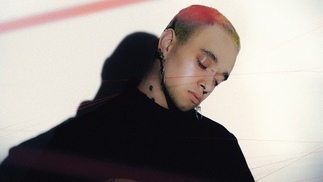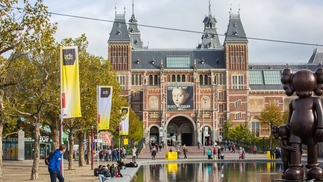COVER FEATURE: DJ MAG MEETS RICHIE HAWTIN
We meet futurist techno maestro Richie Hawtin for our ADE issue...
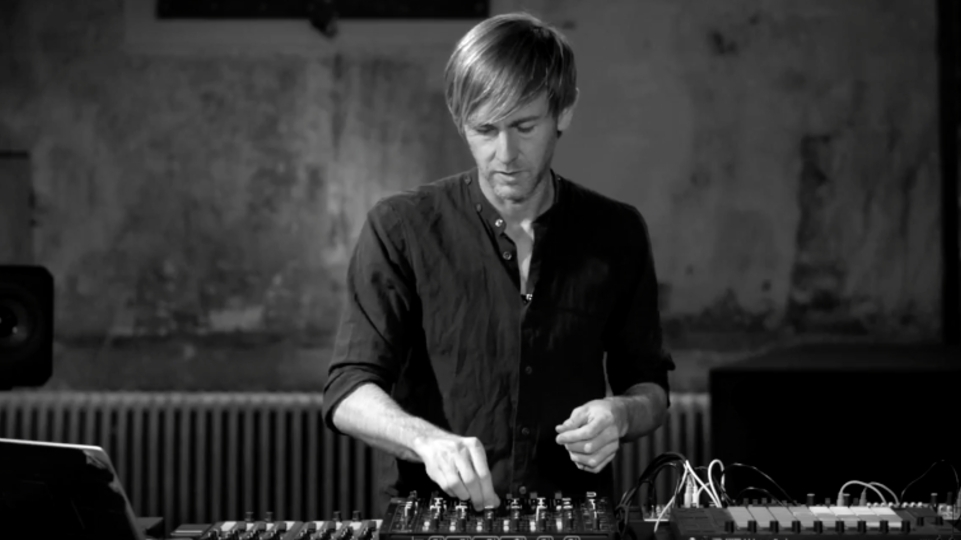
Electronic music’s explosion owes a great deal to futurist techno maestro Richie Hawtin. Not only has he made and played some of the most forward-thinking techno music ever, but he’s had a hand in driving some of the most crucial technological developments to have enhanced our scene over the past two decades. His contribution to the digital realm is immense — his obsession with exploring the future possibilities of technology have seen him play a major part in the growth of digital DJing, helping to revolutionise the way that music is played and presented. Did you know, for instance, that Richie was an early backer of the time-code technology that became Tractor Scratch, or a co-founder of Beatport? Now, with his new PLAYdifferently movement, Richie is re-writing the rule-book all over again. DJ Mag meets him in Amsterdam ahead of this year’s ADE...
Words: Declan McGlynn | Pics: Alex de Brabant, Adrian Batty/Raise-A-Head
--------------
DJ Mag is power-walking through Schiphol airport on an unseasonably cool August morning. Amsterdam’s familiar white sky greets us as we hurry across the car park to the adjacent Hilton, where one of electronic music’s most important figures is sipping a black coffee — one sugar. Forever on a tight schedule, today is no different; he’s in town for Loveland Festival from where he’ll fly straight to Almeria, Spain, having just landed from Vienna the night before. “Daytime festivals are great,” he says, in between sips. “You get to play two shows in one day.”
Richie Hawtin is a man immersed in electronic music. As a producer he’s released countless seminal records under diverse aliases; as a DJ, he’s continuously influenced and innovated the sound and set-up of the booth; and as a label owner he and his rosters continue to help shape the very aesthetic of modern techno. Together with label and business partner John Acquaviva, his investments in companies and technologies went on to reshape the face of electronic music, sometimes in unintended ways, while his ENTER. events and live shows are an all-encompassing experience.
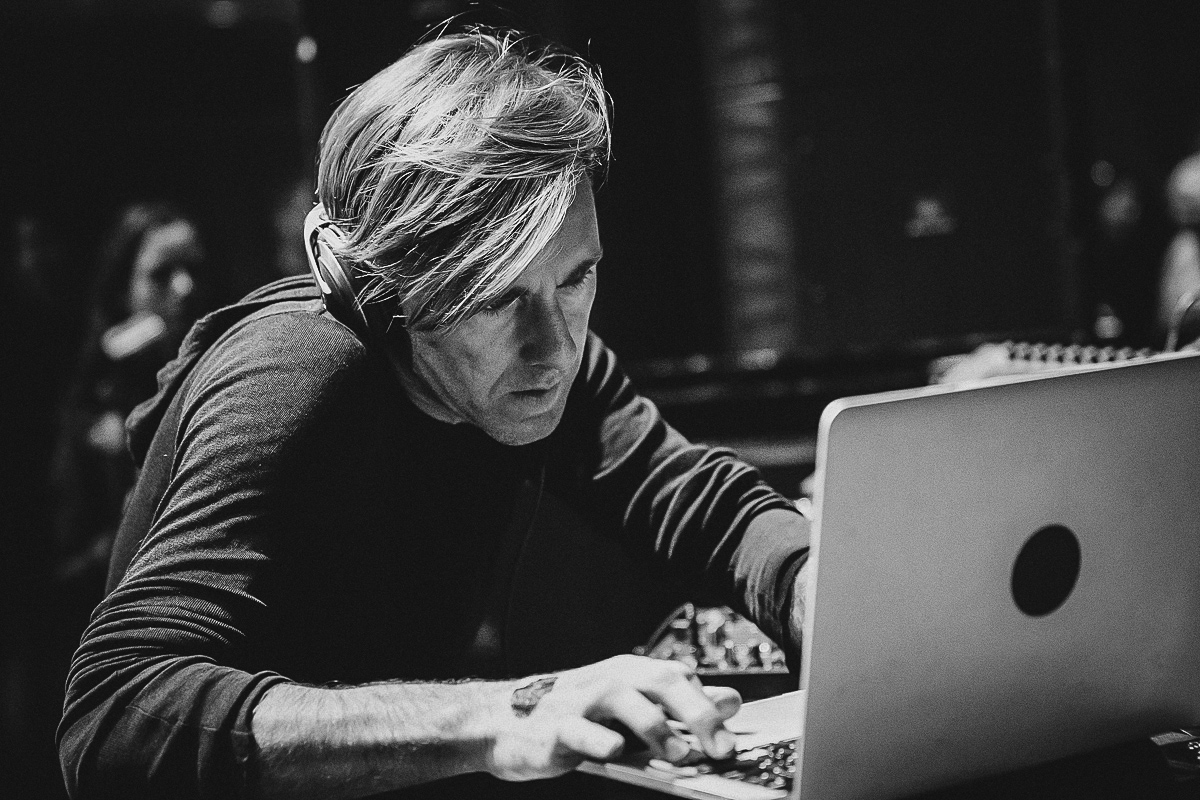
MOTOR CITY ENSEMBLE
Hawtin’s doctrine of sensory immersion began life in the birthplace of techno. Living in Ontario, Canada, he frequently made the trip across the river to Detroit to witness visionaries like Derrick May and Jeff Mills make their mark on the music they were playing.
“I don’t know if they were being disrespectful or what their thinking was, but they didn’t care if they just really fucked with the music,” Richie tells DJ Mag. “When I went to see Derrick, he was grabbing the EQ and would bring the lows out, bring the highs up — the whole song would sound really harsh, and when it kicked back in it was an incredible moment. That’s commonplace now but at that time, hardly anyone else on the planet was really deconstructing and reconstructing music like that.”
For Hawtin, the sonic explorations he encountered in his early days were the perfect complement to his experimentations with technology, first with computers and later with studio equipment. “When I was a kid I loved sitting in front of a computer and programming, but when I discovered music, there was a lot of knob-twiddling and fucking around and experimentation, which I really enjoyed,” he says. “That kind of live jamming was what became exciting in the studio, and therefore became exciting when performing.”
Watching innovators in the clubs “fuck with records” blurred the lines between performance and creation, whether it was constructing something entirely new in the booth or putting personality into familiar records. “I’d be on the dancefloor thinking, ‘I love this record’. Then I’d think, ‘Wait, that’s not that record, what is this record?’ and there’d be that magic moment everyone talks about — the third record, the third record that doesn’t exist. That moment is what I’m waiting for, whether I’m DJing or performing live. It all boils down to creating a sonic experience that, in the best possible way, would never happen again.”
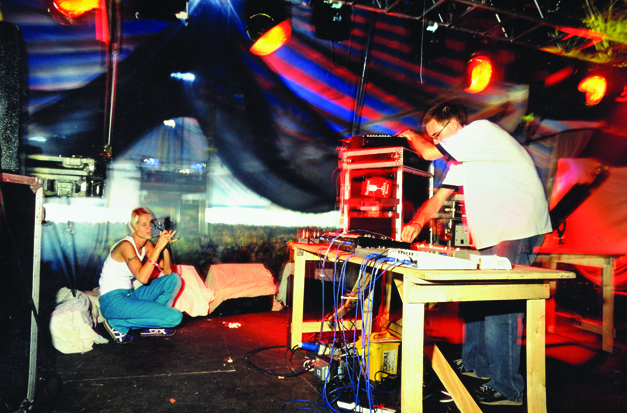
(Hawtin playing Glastonbury in the '90s)
FROM MY MIND TO YOURS
As a second coffee arrives, conversation temporarily stalls. Sitting across from DJ Mag in a trademark black vest, black jeans and combat boots, Hawtin speaks softly, often pausing to consider his next sentence, or to rephrase a previous one. With a distant but gentle persona, the self-confessed introvert rarely makes eye-contact until he’s ready to stress his point in the most eloquent way he can.
As we settle back into our chat, we find ourselves wondering aloud whether that Detroit ethos has survived in an age of seemingly endless choice. With a new generation of producers whose limits have been lifted and who have access to both tools and information that many of the originators could never have afforded, has the vast amount of new music Hawtin receives every week lost its edge?
“I do feel it’s an interesting time for electronic music, as we’re about 25 years in from when techno and house really got going,” he says. “I’m hearing some really inventive records made by young people who are doing something refreshing and exciting. But I also feel the scene is quite reflective, and I’m hearing a lot of records that are uncreatively re-visiting the past.
“For me, coming from the more techno side of the scene and the Detroit futuristic school, I think we have to be very cautious about how nostalgic we become and how much we try to recreate something rather than re-imagine it.”
That musical re-imagining is a common theme in Hawtin’s career. The self-proclaimed control-freak regularly puts himself in positions of uncertainty on stage and in the studio, chasing the third record, the one-off sonic booms that bring him so much satisfaction. It seems like a contradictory stance, the need to constantly be in control while allowing the unexpected to seep through.
“To be spontaneous, you need to really know what you’re doing,” he believes. “You have to have practice, belief and experience that allows you to have the courage to do what feels natural. That feeling of what comes natural is an important idea. When I first sat down in front of the [Roland TR-]909 I thought, ‘This is the machine I’ve been waiting for’, but the more I became attached to that device, the more I became familiar with where the buttons were and how to get a certain feel from it. Then what came natural went to a deeper level that I wasn’t aware of before.
“There’s a misconception that because we’re using technology and there are computers involved, you can just jump in and be great at it, but all these devices are as complicated or as simple as any other instrument,” he continues. “To play something in your own way, not do it by accident and repeat it — that takes time and dedication.”

THE HAWTIN GROOVE
As we talk in the bustling lobby, many guests drop their pace and double-take as they spot the techno titan. Over his shoulder a group of Japanese tourists are lining up, attempting to take a selfie from a distance. It’s an odd scenario to find ourselves in — it’s rarely the case that an ambassador of underground techno is so widely recognisable by the general public. Still, it goes unnoticed by Hawtin, who’s on a roll.
“DJing is about timing — knowing what to do and when to do it. Even with the way I play, I also have to know when the crowd needs to hear a particular record, or when I need to let that record have its own momentum before cutting it up and changing it. For example, I played in Pratersauna in Vienna recently and I started with one track and left it playing for three hours! I played with the loop and the EQ a bit, but my fourth deck in Traktor was on for the whole set with that track playing. That happens quite often — it’s never the same thing because it’s the feeling of the people, the soundsystem etc. I was out in this garden and it was a bit housier, so later when it got a bit techier, this track had a kind of shuffle, fighting against the straighter Berghain-style techno, and I like that.
“I hear a lot that people say I have a kind of groove — it’s not like a Marco Carola funky groove, it’s not totally German and marching straight ahead, it’s something in-between. Often that comes from finding one or two elements during a set and letting them fuse together.”

WORK, REST AND PLAYDIFFERENTLY
Hawtin’s rhetoric is clear: individuality is key. At a time when access to the world of DJing has been democratised, he feels we’re in danger of convenience replacing creativity. It was this concern that led him to host his own North American college campus tour CNTRL in both 2012 and 2015. The tour saw him and peers like Loco Dice, Dubfire, Chris Liebing and Matador travel from city to city in an attempt to inspire young music-makers with a series of lectures and parties at often unassuming venues.
If you’re wondering why a tour with such high-profile artists flew under the radar, it’s because that was exactly the point. For every elaborate ENTER. experience, Hawtin counteracts his more meticulous, ambitious projects with ventures intended to trigger the imagination of his audience — often at his own cost. In January this year, he launched his next endeavor, the PLAYdifferently movement and its first hardware creation, the MODEL 1 mixer. Revealed at the NAMM Show in January, the campaign calls for more experimentation in the booth, shrugging off the convenience of industry standard equipment in favour of originality and creativity.
“I think DJing has become homogenised as the scene has become bigger and as equipment has become standardised in clubs,” Hawtin reckons. “On one side we can celebrate that, because it’s helped lots of people become DJs and walk into a club and perform, but we should be careful about what the definition of a DJ performance is and make sure it doesn’t become too narrow and restricted. The whole thing about electronically-produced music and technology-driven performance is that it should give us incredibly diverse ways of entertaining people.
“Our instrument is technology, it’s not a guitar that’s been fixed, and I feel we’re at a point now where some people, or some technology companies, are trying to restrict it. ‘DJing should be two turntables’, ‘If you can’t beat-match you’re not a DJ’, ‘You have to use vinyl’, ‘CDJ is, computers are not’ and it’s like — listen; this is a ridiculous argument or conversation to have. I don’t want to see us sanitised. Let’s promote the idea of playing differently, of performing differently, of producing differently. It’s so easy, because so many kids are now aspiring to be DJs. I watch some of the big DJs get on the CDJs and pump their fist — and that’s one style. But check out how it feels to play on records, check out what it’s like to play on Traktor, or Serato or on an iPad. There’s no right or wrong way.”
Hawtin has begun to sit up, his hands animated and his eyes wide. It’s clear this is a conversation he’s had before; over dinner with friends and promoters, on stage at conferences around the world, or within himself — his internal monologue baffled and frustrated at many of the comments he reads almost daily.
“You also hear people say, ‘You can’t use that because it’s not professional’ — most of us started out on turntables but not [Technics SL-]1200s. We gravitated slowly towards more professional things, and we all found our way. For me, DJing and live electronic music performance is an artform that should be inspiring and as creative as possible. I’m happy to invite anyone into this world, but I want them to come in with an excitement to be adventurous.”
Despite the division and seemingly conflicting views across the electronic music spectrum, Hawtin’s not interested in being the solo ambassador for change.
“It’s all of us together. We should think about this and talk about it and be aware of what’s happening,” he says. “The scene is huge — it’s an industry, it’s beyond a scene. It’s nothing like it was in the beginning, where there were very pure intentions and people were coming together in a shared belief and love of music. That’s still there, but it’s surrounded by a lot of other aspirations and intentions. “You have the Eurorack [modular synth] DIY culture, where lots of people are making maybe 100 units of one product that are beautiful and considered. Then you have the other side where it’s multi-conglomerate, looking into our scene and wanting to acquire companies, needing to deliver a paper to their shareholders to show that they’re building profits — that’s the scene we live in now. It’s really up to all of us to talk about that and not just bury our heads and say, ‘It’s not as cool as it used to be’ or ‘only press vinyl and do it this way’. We need to participate as a group of people who love music, love technology and love being independent in this adventure.”
Hawtin’s passion is contagious. From his first DJ sets as an unknown ‘Richie Rich’ to his recently revamped live show incorporating infrared cameras tracking his every move, he’s never sat still. As an early backer of the timecode technology that became Traktor Scratch, a co-founder of Beatport, investor in wearable woofer SubPac, patron with charities and organisations like NextAid and Bridges For Music, co-founder of touch-screen control company Liine, educator on CNTRL and now with his PLAYdifferently movement, this is a man who is obsessed with what drives electronic music culture, from the top to the bottom.

THE FUTURE
It would be very easy for Hawtin to give up now. He’s made enough money to never work another day in his life. No one forces him to keep playing secret pop-up gigs, to keep releasing under unknown aliases, to keep driving for change. So where does that thirst come from? And does it ever waiver?
“In the early days, John Acquaviva [Plus 8 and long-time business partner] and I were really inspired by Daniel Miller [Mute label boss] and Kraftwerk. You felt like those people followed a certain path for the long haul. They did what they felt was right at that moment, and that’s what John and I have tried to do. It’s taken us down some really interesting paths in music and technology, with investing in technology companies, helping to incubate some of those ideas that have fed right back into the scene that we started in the first place.
“We’ve met so many incredible people along the way, similar to us, who are very DIY, building up their own ideas and legacy. To be in a place where you see many of those people getting older and still having belief in the whole scene, that’s really amazing.”
As Hawtin reflects, he smiles and leans back, content. “How do we grow old into this scene? What should we be doing at 45, 55 or 70? Are we still going to be playing in clubs? Will we be connected to what the generation wants? That’s scary, but it’s also exciting and an adventure, and that’s a big reason why we got into this in the first place. We looked at each other, John had $5,000 on his credit card and we thought, ‘Why not?’ And that’s what we’ve done for the past 25 years.”
------------

BOX OUT: ENTER ADE
Richie has long been an ambassador for Amsterdam Dance Event. What makes ADE so special to him and the wider dance music community?
“What was funny is when it started there were a lot of other conferences going on that had a lot of importance and I was wondering, ‘Do we really need another one?’ But [ADE General Manager] Richard [Zijlma] and his gang have been able to grow it into exactly what was needed. They were very aware that the scene was developing very rapidly with technology and the Internet and that there was going to be this big explosion of young producers on the scene.
“There was also a real need — post-summer — to come together, talk business and prepare for the next year. Before that you had Miami [Winter Music Conference] and Midem, which was important for the early labels of electronic music. Miami became more popular, but by the time you get there, the whole year is planned, so October is the perfect time to reflect but also make commitments and dream about the year ahead.
“The weather isn’t perfect so everyone is more focused, has meetings indoors, has some nice dinners and goes out at night. For so many reasons, it really comes together and focuses everyone’s attention. You can’t have the size of our industry now without having a couple of points where people come together and really focus on how all this fun happens, because without the business and the framework it would easily crumble.”

BOX OUT: SCRATCH THE ITCH
At the turn of the century, the laptop wasn’t a familiar sight in the booth. Though the CDJ was becoming more popular, it was still in its infancy — vinyl was still very much the most popular medium. Richie Hawtin and his Plus 8 partner John Acquaviva had been sent a link to an insignificant internet forum, where unbelievable claims were being made. A piece of vinyl printed with timecode information was controlling digital files seamlessly through a prototype interface.
“There was a teenager — Mark-Jan [Bastian] — who was living in Holland and had created the concept. John went to visit Mark in the bedroom of his parents’ house with this early prototype playing back recordings of Mark saying, ‘Hi there, how are you?’ and scratching and manipulating it with vinyl. John was absolutely blown away and if I’m very honest, I wasn’t sure if I really believed it. It wasn’t until I was in the room with Mark-Jan and I recorded my own voice and scratched it, reversed it and changed the speed, that I believed we were really gonna go there.”
Excited by the potential, they quickly developed the concept with Mark-Jan Bastian and brought it in front of the industry.
“At [music trade show] Midem, in 1999 or 2000, we did a press conference and we were explaining everything and showing everyone how it worked and people were like, ‘OK, kind of interesting’. But there was a moment they all got it. We had someone in the audience say something into the mic, recorded it, put the needle on the timecode vinyl and started scratching it — and everyone was floored.”
As a man who’s still not sure if his first love was music or technology, it was a landmark moment for Richie.
“To be there when the future of music and technology was right in front of our faces, it was everything that Plus 8 was about. At that point the label had slowed down and John had actually left as we’d decided to take a break from each other, but I said to him, ‘This is everything we’ve ever wanted to do together. Let’s help this kid, form a company and try and bring this to the world’. We made 100 units and although it wasn’t as successful as it is now, it got the idea out and helped inspire some other people. It was the beginning of the next phase of the success of our scene — or the demise of our scene, whatever way you want to look at it.”
The debate around laptops in the booth continues to rage since, with the technology eventually merging into what became Traktor Scratch. For Hawtin, it was a revolution.
“Taking a step into being able to professionally play digital files opened up the door to Beatport and all the other online distributors. Allowing access to our music beyond the record store and beyond the DJ — it changed everything. It was the beginning of not having the secret record; it was the beginning of Top 10s around the world. We had to redefine who we were as performers. My personal belief is that it really helped break open electronic music for a wider generation.”
Of course, the birth of a new technology often leads to the death of another. In an age where vinyl was still king, how did the DJ industry react to a concept that could kill the format off?
“You have to remember at that point, John and I had Plus 8, we had Definitive Records and we had Probe. We had something called IntelliNET, which was a distributor for another 15 or 20 different labels, and we also had our own pressing plant. We basically put ourselves out of a job! In that meeting at Midem, we definitely made some enemies and we definitely lost a lot of friends. It was a very strong moment in both John and I’s lives.”

BOX OUT: TURN THE BEAT AROUND
Despite recent rumours around parent company SFX’s intentions with the dance music staple, Beatport is undoubtedly one of the most recognisable institutions in modern dance music history. In its heyday, a No.1 meant a huge increase in both fees and bookings, with many DJs and A&Rs scouring its top 100s to discover new talent. What many may not realise is that its inception was yet another Hawtin and Acquaviva intervention...
“We did a partnership with Stanton around Final Scratch and then we started working with Native for Traktor Scratch, but there was still no way to buy music. You were still buying vinyl or CDs, but you were ripping it, and that was really tedious.
“We’d seen Apple and the iPod, but when they introduced iTunes Music Store, that was when it exponentially exploded. There was an incredible club in Denver called The Church and when John and I were out there playing, Jonas [Tempel], Brad [Roulier — Beatport co-founders] and the gang said they had ‘This crazy idea’ they were working on. They came to John and I because of Final Scratch and said, ‘You guys were part of the beginning of this revolution, and we think we have another part of the puzzle’.”
For Hawtin and Plus 8 it was initially a selfish venture — an attempt to speed up the monotonous digitising process and make the records they loved to play more immediately available.
“We were so excited by Final Scratch and the possibility that Beatport would at least allow us to get the music that we needed, it was a no-brainer. I’m sure there was some hope that it would be a great business opportunity but at least from my side, you have to go with your gut and what you think is going to be a great decision for you as a person — creatively. People say, ‘If you’re going to collect art, collect art that you love, because you’ve already won’. For me, if I’m going to invest in technology and ideas that can help me as a performer or help inspire the scene around me, then it’s already a winning combination.”
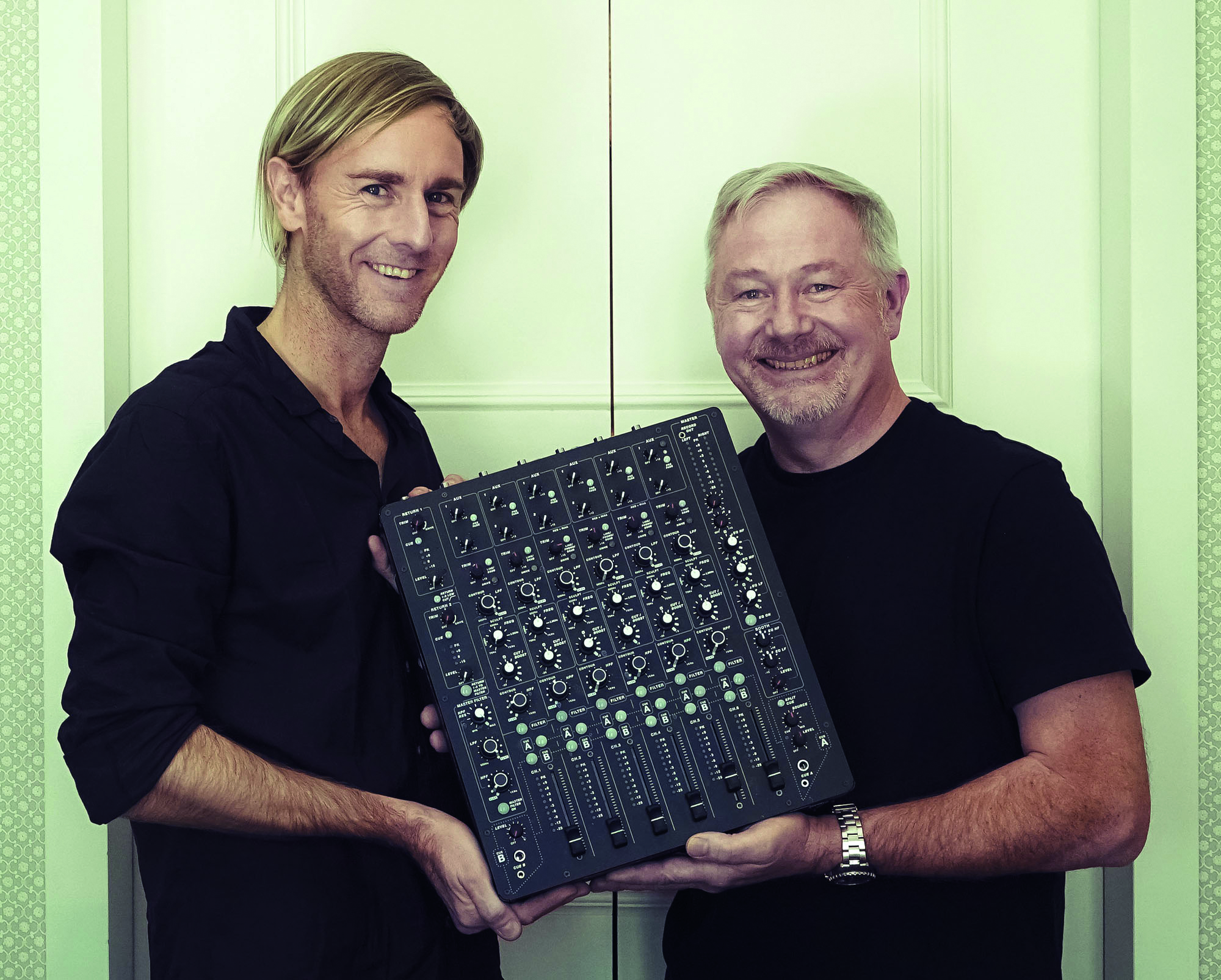
BOX OUT: MODEL FUTURE
Launched in January of this year, Richie Hawtin’s PLAYdifferently movement saw its first hardware creation — the MODEL1 mixer. A collaboration with former lead designer at Allen & Heath, Andy Rigby-Jones, the mixer aims to rethink and redesign the DJ’s approach to sound sculpting in the booth. Featuring two filters, a variable single band EQ and analogue overdrive on every input channel as well as two independent cue busses, booth output EQ and even two power inputs for emergencies, it’s a fully-featured mixer.
Despite Native Instruments’ Traktor being Hawtin’s instrument of choice, there are no digital connections here. It’s pure analogue, from the ins and outs to internal circuitry and filter design.
“I think there’s a tendency right now to go feature overload, to put as many bells and whistles on the mixer as possible. On one level that’s great — there’s a lot of flexibility — but we wanted to get back to a device that did a series of functions in the best possible way. That started to lead us away from digital.”
MODEL1 has already had heavyweight backing with the likes of Loco Dice, Nicole Moudaber, Paco Osuna, Matador and Dubfire all adding it to their tech rider. Recently, Manchester’s Warehouse Project became the mixer’s first production partner, with more to follow. While the price-tag certainly reflects the higher end of DJs and producers, its handmade nature, build quality and UK manufacturing means both Hawtin and Rigby-Jones insist it could not be made any cheaper. The sales figures are on his side, with the unit’s first run of 250 now sold out.
“We’re taking orders for the second run. We can’t keep up with them — we can only make so many per month. A lot of it is hand-assembled and we’re very worried about quality control. We’re all extremely happy and excited about the amount of attention MODEL1 has received. Every day we hear that someone has tested it and loved it. Recently, Carl Cox jumped on the mixer and Yousef posted a video of him jamming on it. We got messages coming in saying, ‘You have to check it out’, then we had Instagrams from Carl saying ‘I love this thing, it’s great!’ We’ve had incredible support from so many people, DJs and clubs but for it to resonate with someone who’s been a role model for me since 1990, and for him to naturally get excited about how good it sounds and how he loves using it, that’s exactly why we did it.”
